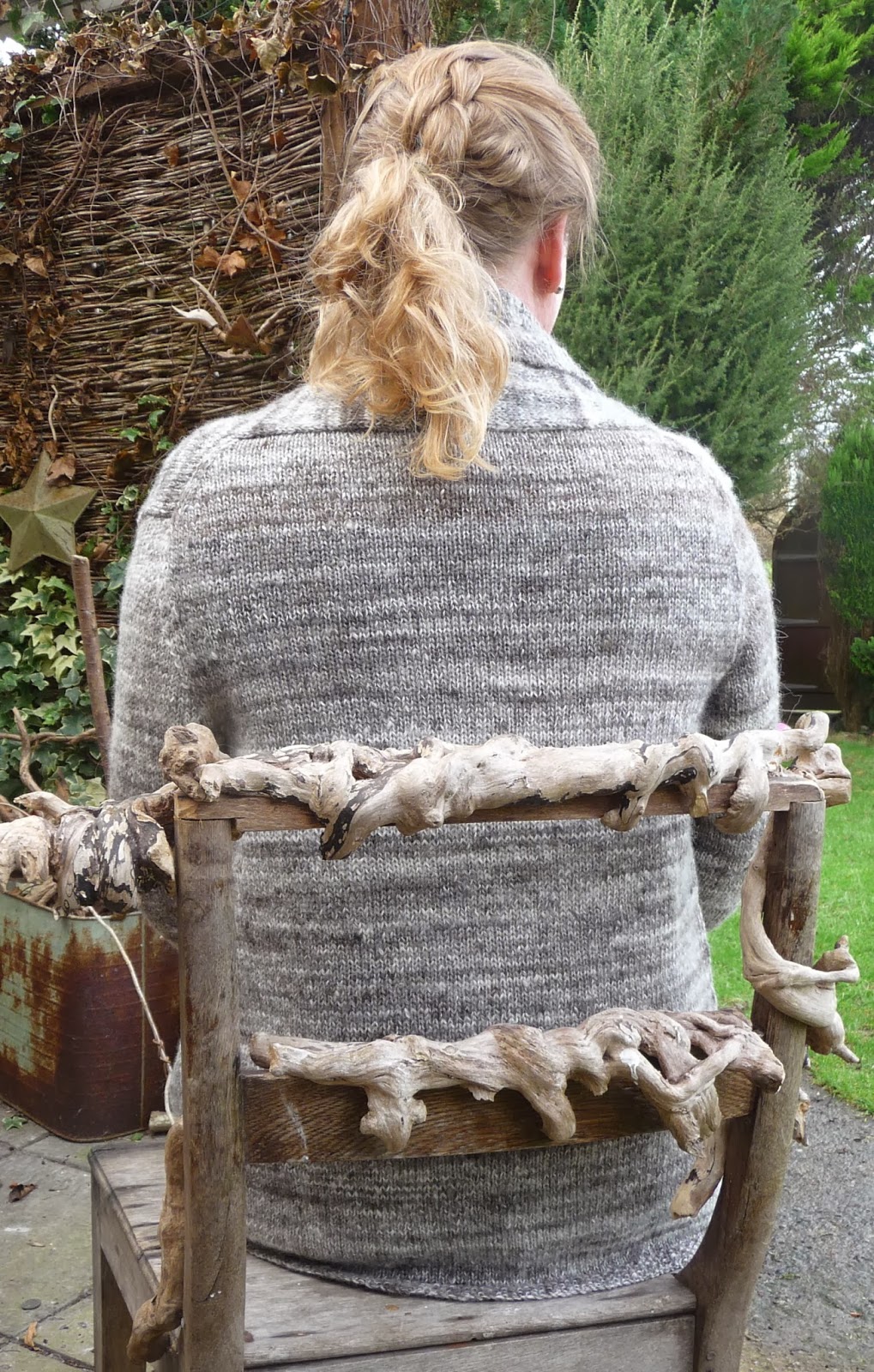Last Autumn, I bought some more Polwarth fleece from Widow Twanky and carded it half and half with Dorset Poll fleece. This spun up very nicely. I Navajo three plied substantial singles, til I had two skeins of chunky weight yarn, each about 70m long. The Polwarth is silky soft, the Dorset Poll bouncy. The combination yarn seemed spot on for a winter hat. When I pulled up the dying coreopsis plants in November, I didn't want to waste any dye still in them, so these skeins were mordanted with alum, then simmered with roughly chopped stems and leaves. Though the bronze colour was warm and pleasing, I couldn't think who it might suit. The yarn got set aside in the Christmas project rush.
Titting about with woad in January, the two skeins fell victim to two vats. They got dipped with rather different results. My brother's birthday falls at the beginning of March and since he is a ginger, I thought the green colours would look good on him. Trial on 6mm needles, planned a striped scarf, thought, oh too dull, I can deal with a bigger challenge than that these days.
How pride does come before a fall.
Searching through possible patterns on Ravelry, I found The Harmonic Hologram. It was hot off the press newly released and looked so much more interesting a way to use two colours than just knitting stripes. Better still, the pattern is adaptable to any weight of yarn and desired scarf size. Best of all, a quick knit - 10 Hours or Less. Should be able to knock that up, wash and dry and get it in the post in plenty of time.
With only a limited amount of wool, I decided to knit the pattern as written, accepting that my version would come up narrower and shorter. Three false starts frogged, I wrote Thursday off to experience. Friday, I managed two whole pattern repeats, though not without error. Keeping an eye on the Wales v France game was not good for my concentration. Our son rang half way through. I was chatting quite happily til the phone was snatched from me and himself hurled some vernacular down the line. Son squawked 'Don't tell me the score .. ' and hung up. Dark mutterings on the ill effects on our offspring of living out there among the English. I pointed out that while he had survived his own stint across the border and come home with a lovely English wife, that could change.
Settled in by late afternoon on Saturday, I watched the thrilling last minute Scotland victory and a cracker of a game between England and Ireland and still managed to make much better progress. I didn't need the pattern any more by Sunday. Once you have the hang of this reversible stitch, it becomes obvious what the next row has to be and much quicker to spot mistakes. All in all, I have to admit it took me much more than ten hours to make.
I am well pleased to have learned this reversible stitch. It makes a thick fabric, good and warm for a scarf. I'd think it would be sturdy and decorative for other applications. The pattern includes a method and a table for calculating how to use any yarn on any needle to make a piece the size required. So nice to have a pattern suitable for hand spinning. The majority relish giving portents of doom for those reckless souls who neglect to buy their specified brand of wool. One to remember for future yarns.
 Good to feel spring is in the air. Most of the weekend was spent outdoors. This has been the first time in months that I've got much done in the garden. The borders all badly need clearing, but with two done, the remainder is less overwhelming. Took a chance on the exceptionally mild weather and planted out some autumn sown weld plants. The greenhouse has been quietly growing mould, til himself got the pressure hose out. Now it is ready for seed trays and the 2014 dye plants.
Good to feel spring is in the air. Most of the weekend was spent outdoors. This has been the first time in months that I've got much done in the garden. The borders all badly need clearing, but with two done, the remainder is less overwhelming. Took a chance on the exceptionally mild weather and planted out some autumn sown weld plants. The greenhouse has been quietly growing mould, til himself got the pressure hose out. Now it is ready for seed trays and the 2014 dye plants. The front garden may be squelchy with rain, but the croci have multiplied. Far too welcome a sight to be picked for dye, though I have read that purple petals will give blue.







































